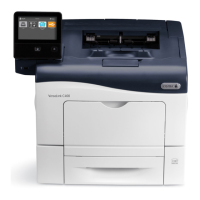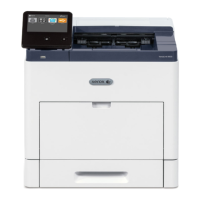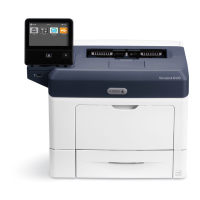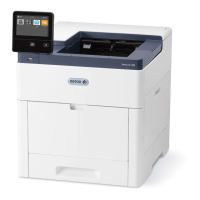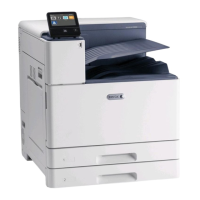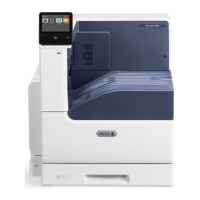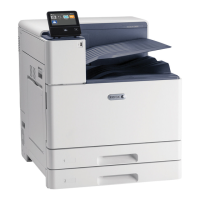To install a root certificate:
1. In the Embedded Web Server, click Properties→Security.
2. Click Certificates.
3. Click Security Certificates.
4. Click the Root/Intermediate Trusted Certificates tab.
5. Click Install Certificate.
6. Click Browse or Choose File, then navigate to a signed certificate file.
7. Click Open or Choose.
8. Click Next.
9. To help identify the certificate in the future, type a Friendly Name.
10. Click Next.
The digital certificate appears in the list of Installed certificates.
CCrreeaattiinngg aanndd IInnssttaalllliinngg aa XXeerrooxx DDeevviiccee CCeerrttiiffiiccaattee
If you do not have a server functioning as a certificate authority, install a Xerox
®
Device Certificate
on the printer. When you create a Xerox
®
Device Certificate, the printer generates a certificate, signs
it, and creates a public key used in SSL encryption. After you install a Xerox
®
Device Certificate on the
printer, install the Device Root Certificate Authority in any device that communicates with the printer.
Examples of other devices include client Web browsers for HTTPS or a RADIUS authentication server
for 802.1X.
When the Device Root Certificate Authority is installed:
• Users can access the printer using the Embedded Web Server
• Certificate warning messages do not appear
Note: Creating a Xerox
®
Device Certificate is less secure than creating a certificate signed by a
trusted certificate authority.
1. In the Embedded Web Server, log in as administration, then click System→Security.
2. In the Certificates area, click Security Certificates.
3. Click Create.
4. Click Create Self-Signed Certificate.
5. Click Hash Algorithm, then select an option.
6. Click Public Key Length, then select an option.
7. For Issuer, type the host name for the printer.
8. For Validity Period, type the number of days that the new certificate is valid.
9. Click Close.
Xerox
®
VersaLink
®
Series Multifunction and Single Function Printers
System Administrator Guide
87
Security
